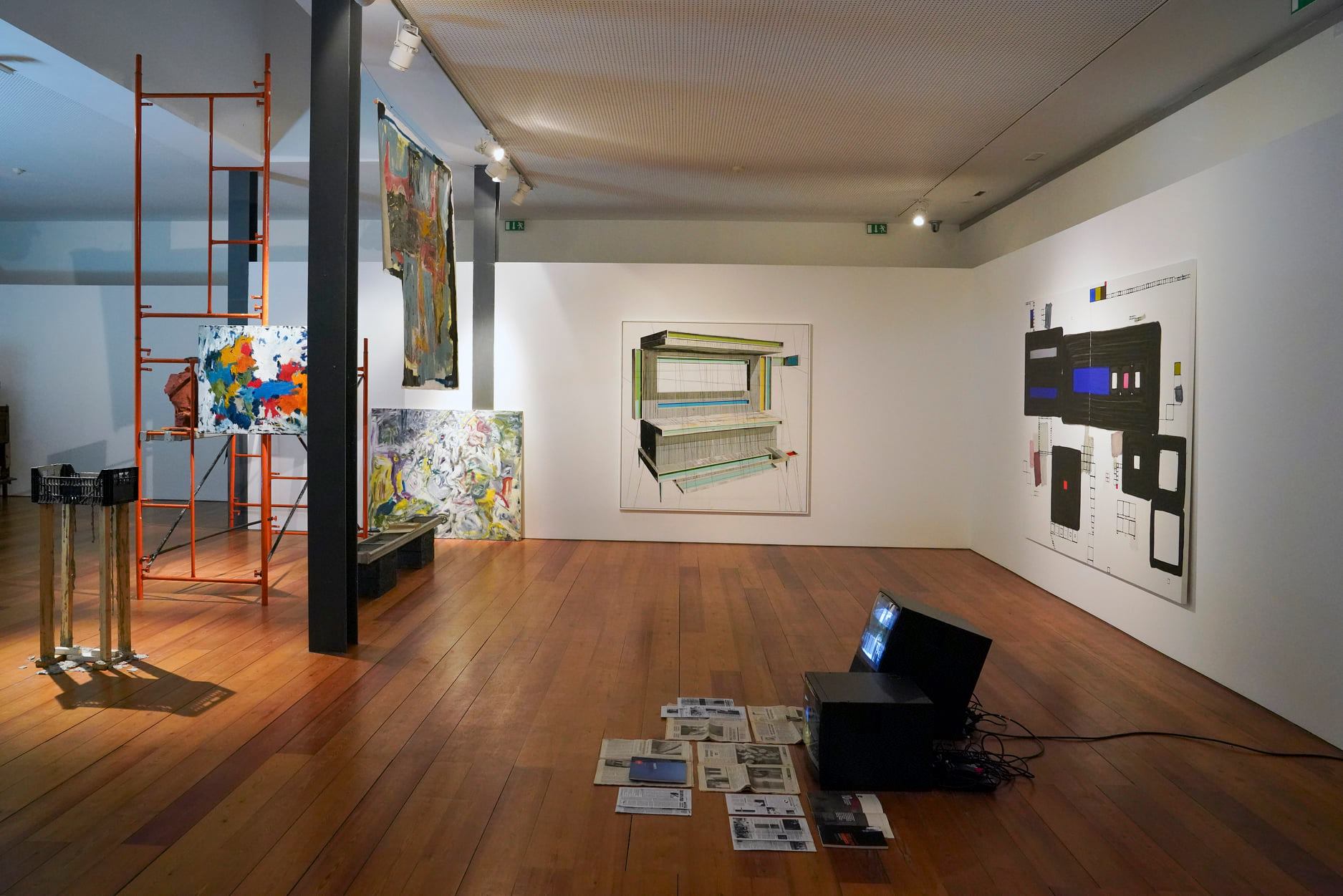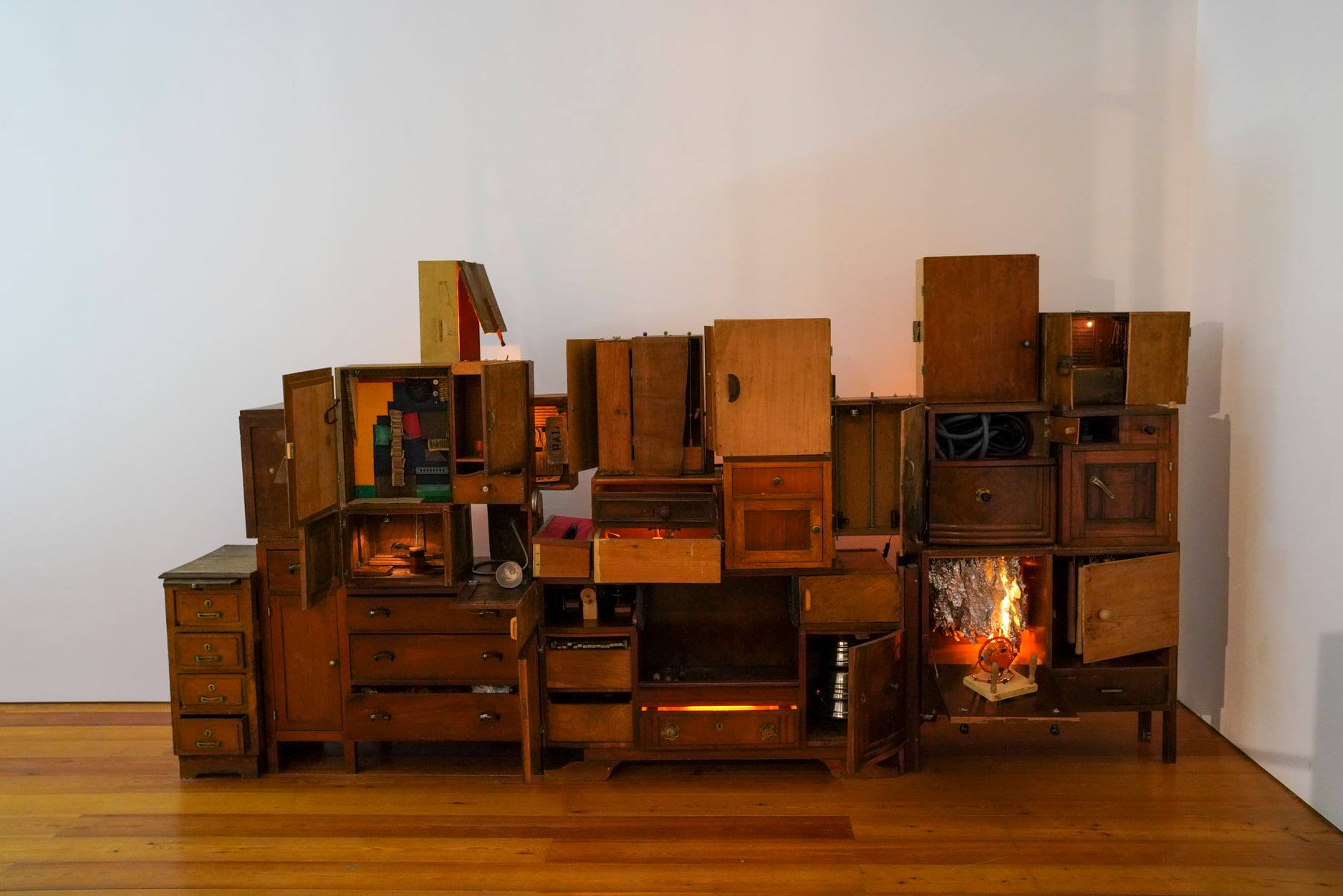AUTHOR: IVO MARTINS
EDITION: (Catalogue) Centro Cultural Vila Flor DATE: December 2020
Much has changed over the last fifteen years, between 2006/2020, making it unclear what can currently be defined as art. No one is able to fully understand the economic, social, political or cultural implications of the artistic process, nor its full scale or complexity. In his book, “Critique of Cynical Reason”, Peter Sloterdjik suggests that art is the ultimate guarantor of a sovereign and realistic conscience, positioning it between religion and science. Unlike religion, art does not appeal to our faith, since it is based on the experience and vivacity of our senses, and unlike science, it does not need to circumscribe itself solely with the empirical realm. We can therefore conclude that art teaches us different ways to feel and create, and constitutes a kind of freedom.
The inauguration of the Centro Cultural Vila Flor made it possible to conceive a series of exhibitions developed exclusively for the exhibition room of the old “Palace”, that was part of a unique and fundamental cultural facility in Portugal. The Mannerist style building has tremendous architectural dignity, and its long history is associated with the social and cultural life of the city of Guimarães, and moments deeply rooted within local heritage.
In the “Palace”, art was perceived as a kind of subjective and interior quicksand, something that manifests itself in an unpredictable and flexible manner, engendering feelings of darkness, contradiction and debate. In this place of open possibilities, each presentation tried to elude the impossible, as a moment of experience in which miracles happen. Before the eternal fleeting presence of artists who enthusiastically embraced the chance to work with us, each exhibition confronted the existential paradox of duration, impacted and yet and left intact by the turbulence of the outside world - in some cases unattainable, in others with a zero degree of meaning. Notwithstanding the many associated doubts, uncertainties and incongruities, the works of art presented in the “Palace” can often be viewed as a critical approach, offering good-humoured perspectives that incorporate a kind of revitalising and provocative knowledge of the conservative values ?of the market and prevailing systems of recognition. Despite abundant forms of communication and mass circulation the present era is inundated with ideas of monoculture and mono-information. This makes it impossible to remain indifferent to the past 15 years of activity, in contact with an immense and plural universe of artists who through their generous spirit have helped make this project a reality. Without them, the “Palace” could never be an epiphenomenon that led many people to seek out new causes and consequences.
No matter how much verbal space everyone has access to, and uses, to frame and describe this exhibition space, the work achieved herein is surprisingly resistant to the limits of language. The quickest way to understand the “Palace” is to assume that there was never a plan or any letter of intent. Some of the key moments, although their selection is always debatable, represent sensitive points of reference, that guide the observer towards personal and inner discovery. The editorial production that resulted from the curatorial work developed in the “Palace” showcases these trends and, although it does not harbour all the necessary information, it reveals essential and useful documents to understand their usefulness, triggering internal processes of understanding, fostering clarifications, and proving that everything can be compatible, even when the words themselves are incompatible. Without an established road map of objectives, over the past 15 years the “Palace” has always acted as if it were offering an attentive gaze towards the echo of collective and individual emergencies, provoked by those who believe in our contemporaneity. It turned its programmatic dynamics into an arrhythmic, disruptive and plural platform. Through its intermittent nature, it sought out the limits of democracy and freedom of the spaces used for public presentation, which from a utopian perspective might be considered to constitute what Hakim Bey calls a TAZ - a Temporary Autonomous Zone.
At the “Palace”, we are aware of the fact that through entertainment, it is possible to safeguard art’s full creative potential, diverting it from its destructive and reactive tensions. It is also possible to create small pockets of freedom and emancipation, that confront the oppositions of arrogant defence of established norms, in a system whose dynamics of affection and contempt provoke a hardening of discourses, loss of lightness and absence of irony. Gazing at a “Palace” can produce such ironic hyperbole.
TRANSLATION: MARTIN DALE



